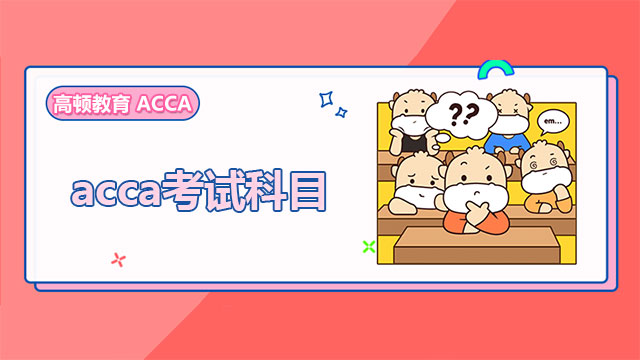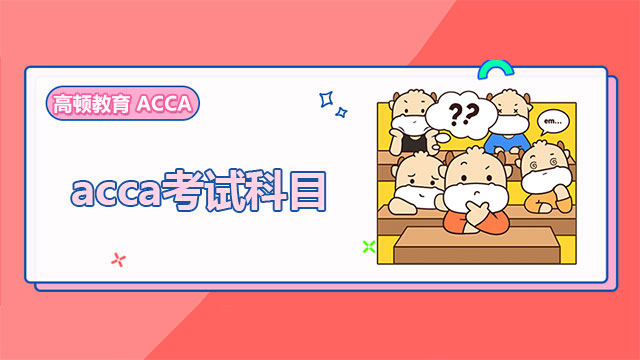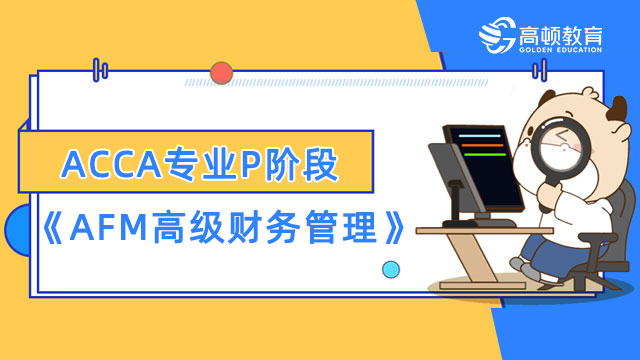试题回顾,ACCA考试《公司报告P2》知识辅导2
来源:
高顿网校
2015-03-18
博学之,审问之,慎思之,明辨之,笃行之。 高顿网校为广大学员提供2015年ACCA考试网络课程,助您一臂之力,2015年考试顺利通过!祝您梦想成真!免费听课》
RELEVANT TO ACCA QUALIFICATION PAPER F7 AND P2
Studying Paper F7 or P2
Performance objectives 10 and 11 are relevant to this exam
The IASB抯 Conceptual Framework for Financial Reporting
I am from England, and here in the UK, unlike most countries, our system of
government has no comprehensive written constitution. Many countries do
have such constitutions and in these circumstances the laws of the land are
shaped and influenced by the constitution. Now while the International
Accounting Standards Board (IASB) is not a country it does have a sort of
constitution, in the form of the Conceptual Framework for Financial Reporting
(the Framework), that proves the definitive reference document for the
development of accounting standards. The Framework can also be described
as a theoretical base, a statement of principles, a philosophy and a map. By
setting out the very basic theory of accounting the Framework points the way
for the development of new accounting standards. It should be noted that the
Framework is not an accounting standard, and where there is perceived to be a
conflict between the Framework and the specific provisions of an accounting
standard then the accounting standard prevails.
Before we look at the contents of the Framework, let us continue to put the
Framework into context. It is true to say that the Framework:
seeks to ensure that accounting standards have a consistent approach to
problem solving and do not represent a series of ad hoc responses that
address accounting problems on a piece meal basis
assists the IASB in the development of coherent and consistent
accounting standards
is not a standard, but rather acts as a guide to the preparers of financial
statements to enable them to resolve accounting issues that are not
addressed directly in a standard
is an incredibly important and influential document that helps users
understand the purpose of, and limitations of, financial reporting
used to be called the Framework for the Preparation and Presentation of
Financial Statements
?is a current issue as it is being revised as a joint project with the IASB's
American counterparts the Financial Accounting Standards Board .
Overview of the contents of the Framework
The starting point of the Framework is to address the fundamental question of
why financial statements are actually prepared. The basic answer to that is
they are prepared to provide financial information about the reporting entity
that is useful to existing and potential investors, lenders, and other creditors in
making decisions about providing resources to the entity.
In turn this means the Framework has to consider what is meant by useful
information. In essence for information to be useful it must be considered both
relevant, ie capable of making a difference in the decisions made by users and
2THE IASB CONCEPTUAL FRAMEWORK FOR FINANCIAL
REPORTING
MARCH 2011
be faithful in its presentation, ie be complete, neutral and free from error. The
usefulness of information is enhanced if it is also comparable, verifiable,
timely, and understandable.
The Framework also considers the nature of the reporting entity and, in what
reminds me of my school chemistry lessons, the basic elements from which
financial statements are constructed. The Framework identifies three elements
relating to the statement of financial position, being assets, liabilities and
equity, and two relating to the income statement, being income and expenses.
The definitions and recognition criteria of these elements are very important
and these are considered in detail below.
The five elements
An asset is defined as a resource controlled by the entity as a result of past
events and from which future economic benefits are expected to flow to the
entity.
Assets are presented on the statement of financial position as being
noncurrent or current. They can be intangible, ie without physical presence, eg
goodwill. Examples of assets include property plant and equipment, financial
assets and inventory.
While most assets will be both controlled and legally owned by the entity it
should be noted that legal ownership is not a prerequisite for recognition,
rather it is control that is the key issue. For example IAS 17, Leases, with
regard to a lessee with a finance lease, is consistent with the Framework's
definition of an asset. IAS 17 requires that where substantially all the risks and
rewards of ownership have passed to the lessee it is regarded as a finance
lease and the lessee should recognise an asset on the statement of financial
position in respect of the benefits that it controls, even though the asset
subject to the lease is not the legally owned by the lessee. So this reflects that
the economic reality of a finance lease is a loan to buy an asset, and so the
accounting is a faithful presentation.
A liability is defined as a present obligation of the entity arising from past
events, the settlement of which is expected to result in an outflow from the
entity of resources embodying economic benefits.
Liabilities are also presented on the statement of financial position as being
noncurrent or current. Examples of liabilities include trade payables, tax
creditors and loans.
It should be noted that in order to recognise a liability there does not have to
be an obligation that is due on demand but rather there has to be a present
obligation. Thus for example IAS 37, Provisions, Contingent Liabilities and 3THE IASB CONCEPTUAL FRAMEWORK FOR FINANCIAL
REPORTING
MARCH 2011
Contingent Assets is consistent with the Framework's approach when
considering whether there is a liability for the future costs to decommission oil
rigs. As soon as a company has erected an oil rig that it is required to
dismantle at the end of the oil rig's life, it will have a present obligation in
respect of the decommissioning costs. This liability will be recognised in full,
as a non-current liability and measured at present value to reflect the time
value of money. The past event that creates the present obligation is the
original erection of the oil rig as once it is erected the company is responsible
to incur the costs of decommissioning.
Equity is defined as the residual interest in the assets of the entity after
deducting all its liabilities.
The effect of this definition is to acknowledge the supreme conceptual
importance of indentifying, recognising and measuring assets and liabilities, as
equity is conceptually regarded as a function of assets and liabilities, ie a
balancing figure.
Equity includes the original capital introduced by the owners, ie share capital
and share premium, the accumulated retained profits of the entity, ie retained
earnings, unrealised asset gains in the form of revaluation reserves and, in
group accounts, the equity interest in the subsidiaries not enjoyed by the
parent company, ie the non-controlling interest (NCI)。 Slightly more exotically,
equity can also include the equity element of convertible loan stock, equity
settled share based payments, differences arising when there are increases or
decreases in the NCI, group foreign exchange differences and contingently
issuable shares. These would probably all be included in equity under the
umbrella term of Other Components of Equity.
Income is defined as the increases in economic benefits during the accounting
period in the form of inflows or enhancements of assets or decreases of
liabilities that result in increases in equity, other than those relating to
contributions from equity participants.
Most income is revenue generated from the normal activities of the business in
selling goods and services, and as such is recognised in the Income section of
the Statement of Comprehensive Income, however certain types of income are
required by specific standards to be recognised directly to equity, ie reserves,
for example certain revaluation gains on assets. In these circumstances the
income (gain) is then also reported in the Other Comprehensive Income section
of the Statement of Comprehensive Income.
The reference to ther than those relating to contributions from equity
participants?means that when the entity issues shares to equity shareholders,
4THE IASB CONCEPTUAL FRAMEWORK FOR FINANCIAL
REPORTING
MARCH 2011
while this clearly increases the asset of cash, it is a transaction with equity
participants and so does not represent income for the entity.
Again note how the definition of income is linked into assets and liabilities.
This is often referred to as he balance sheet approach?(the former name for
the statement of financial position)。
Expenses are defined as decreases in economic benefits during the accounting
period in the form of outflows or depletions of assets or incurrences of
liabilities that result in decreases in equity, other than those relating to
distributions to equity participants.
The reference to ther than those relating to distributions to equity
participants?refers to the payment of dividends to equity shareholders. Such
dividends are not an expense and so are not recognised anywhere in the
Statement of Comprehensive Income. Rather they represent an appropriation
of profit that is as reported as a deduction from Retained Earnings in the
Statement of Changes in Equity.
Examples of expenses include depreciation, impairment of assets and
purchases. As with income most expenses are recognised in the Income
Statement section of the Statement of Comprehensive Income, but in certain
circumstances expenses (losses) are required by specific standards to be
recognised directly in equity and reported in the Other Comprehensive Income
Section of the Statement of Comprehensive Income. An example of this is an
impairment loss, on a previously revalued asset, that does not exceed the
balance of its Revaluation Reserve.
The recognition criteria for elements
The Framework also lays out the formal recognition criteria that have to be met
to enable elements to be recognised in the financial statements. The
recognition criteria that have to be met are that
that an item that meets the definition of an element and
it is probable that any future economic benefit associated with the item
will flow to or from the entity and
the item cost or value can be measured with reliability.
Measurement issues for elements
Finally the issue of whether assets and liabilities should be measured at cost or
value is considered by the Framework. To use cost should be reliable as the
cost is generally known, though cost is not necessary very relevant for the
users as it is past orientated. To use a valuation method is generally regarded
as relevant to the users as it up to date, but value does have the drawback of
not always being reliable. This conflict creates a dilemma that is not
satisfactorily resolved as the Framework is indecisive and acknowledges that 5THE IASB CONCEPTUAL FRAMEWORK FOR FINANCIAL
REPORTING
MARCH 2011
there are various measurement methods that can be used. The failure to be
prescriptive at this basic level results in many accounting standards sitting on
the fence how they wish to measure assets. For example IAS 40, Investment
Properties and IAS 16, Property, Plant and Equipment both allow the preparer the
choice to formulate their own accounting policy on measurement.
Applying the Framework
A company is about to enter into a three-year lease to rent a building. The
lease cannot be cancelled and there is no certainty of renewal. The landlord
retains responsibility for maintaining the premises in good repair. The
directors are aware that in accordance with IAS 17 that technically the lease is
classified as an operating lease, and that accordingly the correct accounting
treatment is to simply expense the income statement with the rentals payable.
Required
Explain how such a lease can be regarded as creating an asset and liability per
the Framework.
Solution ?lease
Given that it is reasonable to assume that the expected life of the premises will
vastly exceed three years and that the landlord (lessor) is responsible for the
maintenance, on the basis of the information given, the risks and rewards of
ownership have not passed. As such IAS 17 prescribes that the lessee charges
the rentals payable to the income statement. No asset or liability is recognised,
although the notes to the financial statements will disclose the existence of the
future rental payments.
However, instead of considering IAS 17 let us consider how the Framework
could approach the issue. To recognise a liability per the Framework requires
that there is a past event that gives rise to a present obligation. It can be
argued that the signing of the lease is a sufficient past event as to create a
present obligation to pay the rentals for the whole period of the lease. On the
same basis, while substantially all the risks and rewards of ownership have not
passed, the lessee does control the use of the building for three years and has
the benefits that brings. Accordingly, when considering the Framework, a
radically different potential treatment arises for this lease. On entering the
lease a liability is recognised, measured at the present value of the future cash
flow obligations to reflect the time value of money. In turn an asset would also
be accounted for. After the initial recognition of the liability, a finance cost is
charged against profit in respect of unwinding the discount on the liability. The
annual cash rental payments are accounted for as a reduction in the liability.
The asset is systematically written off against profit over the three years of the
agreement (depreciation)。
6 THE IASB扴 CONCEPTUAL FRAMEWORK FOR FINANCIAL
REPORTING
MARCH 2011
There is, at present, a conflict between IAS 17 and the Framework. The IASB is
currently reviewing IAS 17 because the current accounting treatment of lessees not recognising the future operating lease rentals as liabilities arguably amounts to off balance sheet financing. The Framework definition of a liability is at the heart of proposals to revise IAS 17 to ensure that the statement of financial position faithfully and completely represents all an entity liabilities. Accordingly this conflict should soon be resolved.Tom Clendon FCCA is a subject expert at Kaplan
小编寄语:成功的人是跟别人学习经验,失败的人只跟自己学习经验。
| ACCA网络课程 | 课程专业名称 | 讲师 | 试听 |
 85%的人正在学习该课程 85%的人正在学习该课程 | ACCA 全维度网课体验课程 实景课堂与独立录制 覆盖所有知识点,根据学习计划推进学习进度 | 高顿名师 |  |
 70%的人正在学习该课程 70%的人正在学习该课程 | ACCA网课全科卡(8.2折) 为零基础刚开始学习ACCA的学员特别定制 | 高顿名师 |  |
精彩推荐:
版权声明:本条内容自发布之日起,有效期为一个月。凡本网站注明“来源高顿教育”或“来源高顿网校”或“来源高顿”的所有作品,均为本网站合法拥有版权的作品,未经本网站授权,任何媒体、网站、个人不得转载、链接、转帖或以其他方式使用。
经本网站合法授权的,应在授权范围内使用,且使用时必须注明“来源高顿教育”或“来源高顿网校”或“来源高顿”,并不得对作品中出现的“高顿”字样进行删减、替换等。违反上述声明者,本网站将依法追究其法律责任。
本网站的部分资料转载自互联网,均尽力标明作者和出处。本网站转载的目的在于传递更多信息,并不意味着赞同其观点或证实其描述,本网站不对其真实性负责。
如您认为本网站刊载作品涉及版权等问题,请与本网站联系(邮箱fawu@gaodun.com,电话:021-31587497),本网站核实确认后会尽快予以处理。
点一下领资料
【整理版】ACCA各科目历年真题
真题高频考点,刷题全靠这份资料
下载合集
acca全科学习思维导图
梳理核心考点,一图看懂全部章节
下载合集
2023年acca考纲解析
覆盖科目重难点,备考按照计划走
下载合集
acca备考 热门问题解答
- acca考试怎么搭配科目?
-
建议优先选择相关联的科目进行搭配报考,这样可以提高备考效率,减轻备考压力,1、F1-F4:为随时机考科目,难度较低,这里可以自行随意选择考试顺序。2、F5-F9:如果你的工作的和财务会计或者审计有关、或者你比较擅长财务和审计的话,推荐先考F7和F8。你可以选择一起考ACCA考试科目F7和F8或者先考F7(8)再考F8(7),这就要取决你一次想考几门。3、P阶段:选修科目中,建议企业首选AFM!第二部分科目进行选择,如果AA和SBR掌握学生更好,可以通过选择AAA,如果SBL掌握的好,可以自己选择APM。
- acca一共几门几年考完?
-
acca一共有15门考试科目,其中有必修科目和选修科目,考生需要考完13门科目才能拿下证书。
- acca一年考几次?
-
acca一年有4次考试,分别是3月、6月、9月和12月,分季机考科目是采取的这类四个考季的模式,而随时机考则是没有这方面的时间规定限制,可以随报随考。
- acca的含金量如何?
-
ACCA证书的含金量是比较高的,从就业、能力提升、全球认可等角度来说,都是比较有优势的证书,其含金量主要表现在以下几个方面:1、国际化,认可度高;2、岗位多,就业前景好;3、缺口大,人才激励。
严选名师 全流程服务
其他人还搜了
热门推荐
-
acca专业阶段考试科目有哪些?究竟都考些什么? 2023-04-23
-
accaP阶段科目考完需要多久?速戳了解! 2023-03-28
-
ACCA高级课程是哪几门?和基础课程比难度怎么样? 2023-03-17
-
sbr和sbl哪个难?accaP阶段先考哪个? 2023-03-16
-
accaP阶段报名费是多少?一文介绍全了! 2023-03-14
-
accaP阶段有哪些科目?各科目详细介绍! 2023-03-14
-
accap阶段考试顺序是怎样的?选修科目怎么选? 2023-03-10
-
acca考试科目:《ATX高级税务》重点详解! 2023-03-06
-
acca考试科目:《APM高级业绩管理》重点详解! 2023-03-06
-
acca考试科目:《AFM高级财务管理》重点详解! 2023-03-06
-
accap阶段有效期是多久?需要几年内考完? 2023-03-01
-
accaP阶段选修选哪两门?各科难度对比来了! 2023-02-28
-
2023年acca的sbl怎么学?点击查收备考攻略! 2023-02-24
-
acca考试p阶段科目题型,附各科分值参考! 2023-02-23
-
accap阶段要考几门?重难点是什么? 2023-02-10
-
accap阶段要考几门?重难点是什么? 2023-02-10
-
accaP阶段科目怎么搭配?先考哪门? 2023-02-09
-
ACCA专业P阶段:《AFM高级财务管理》复习攻略 2023-01-30
-
accap阶段选哪两门?考试重难点介绍! 2023-01-17
-
acca考试科目:《AAA高级审计与鉴证》题型及重点! 2023-01-17
-
acca专业阶段考试难度分析,选修科目报考指南来了! 2023-01-12
-
accap阶段报考顺序推荐,先报哪个好? 2022-12-15
-
ACCAp阶段一次最多考几门?成绩有效期是多久? 2022-08-24
-
ACCA的p阶段需要备考多久才够?考试难度怎么样? 2022-08-18
-
ACCAp阶段考试需要考几门?考试时间是哪天? 2022-08-15
-
ACCA考试P阶段考几门?P阶段成绩有效期是多久? 2022-08-12
-
ACCAP阶段科目难度高吗?P阶段是机考吗? 2022-08-10
-
ACCA最后四门难考吗?通过率怎么样? 2022-07-19
-
ACCA英语不好怎么办?怎么提高英语? 2022-07-14
-
ACCA机考报名时间是什么时候?怎么报考? 2022-07-14
 更多服务
更多服务









































